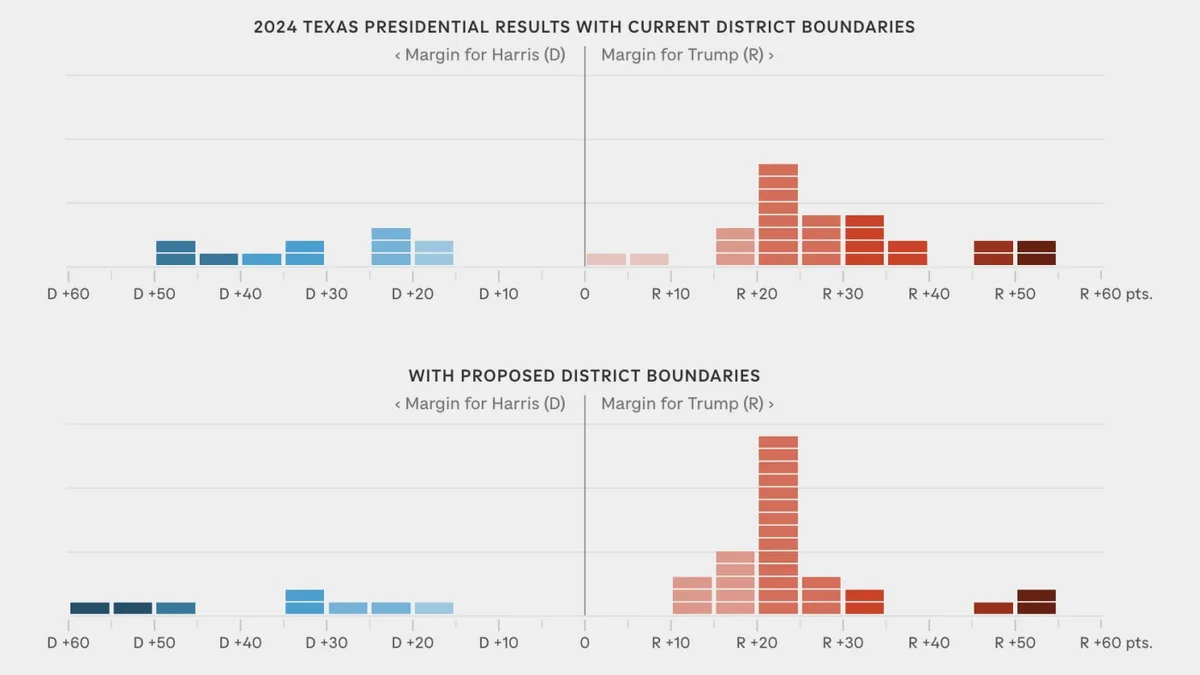
In a significant move that could reshape the political landscape, the leaders of the two most populous states in the U.S., California and Texas, are engaged in a fierce battle over redistricting ahead of the upcoming midterm congressional elections. This unusual shift was sparked by former President Trump urging Texas to redraw its voting lines to favor Republican candidates. The slim Republican majority in Congress, currently at 219 to 212, has raised concerns within the party about maintaining their hold on power as they pursue key Trump-era policies, including mass deportations, healthcare cuts, and tax breaks.
Redistricting is a crucial process that occurs every decade following the national census, which determines the allocation of the 435 seats in the U.S. House of Representatives. As populations shift, states must redraw their congressional maps to ensure that each district contains roughly the same number of residents, approximately 700,000. This technical process significantly impacts electoral outcomes, as the way voters are grouped into districts can influence who wins and how much each vote counts.
The Texas and California legislatures are set to convene this week to discuss their conflicting plans for redistricting. While Texas Republicans aim to create additional districts that favor their party, California's Democrats under Governor Gavin Newsom are seeking to implement changes that could bolster Democratic representation.
Gerrymandering refers to the manipulation of district boundaries by politicians to gain electoral advantages. Critics argue that this practice allows politicians to choose their voters rather than the other way around. The term originated in the early 1800s when Massachusetts Governor Elbridge Gerry approved a district that resembled a salamander, leading to the combination of his name with the word “mander.”
According to the Brennan Center for Justice, gerrymandering skews election results, diminishes competition in races, and undermines the voting power of communities of color. The process often involves packing voters from the opposing party into fewer districts to limit their influence or cracking them across multiple districts to dilute their voting power.
In Texas, Republicans are responding to Trump’s call to create five new congressional districts that would strengthen their party's position. However, Texas Democrats have attempted to thwart these efforts by leaving the state, thereby denying the legislature the quorum needed to vote on the proposed maps. This has led to arrest warrants being issued for absent Democrats, and Governor Abbott has taken legal action to remove them from office.
In an interesting twist, as Texas Republicans push forward, California's Governor Newsom is urging his state lawmakers to expedite a new map that could provide Democrats with a similar advantage in five newly drawn districts. Unlike Texas, California has a Citizens Redistricting Commission, which was designed to reduce political influence in the redistricting process. Newsom's current maneuver seeks to bypass this commission to expedite the changes.
Racial gerrymandering occurs when district lines are drawn in a way that diminishes the electoral power of a racial group, often resulting in the division of communities of color into multiple districts. This practice is illegal and can manifest in two ways: packing, where voters of color are concentrated into a single district, and cracking, where they are spread across several districts to minimize their voting impact.
Texas Republicans argue that their proposed maps will create majority-Latino districts, presenting it as an opportunity for Latino voters. However, critics, including U.S. Representative Jasmine Crockett, contend that such extreme concentrations of Latino voters—some districts reaching up to 80% Latino—constitute illegal racial packing.
With 38 congressional districts, Texas Republicans already control 25, and they openly acknowledge their intention to create boundaries that favor their party. They cite a 2019 Supreme Court ruling which states that courts cannot intervene in cases of partisan gerrymandering, thus legitimizing their current efforts.
As the political landscape continues to evolve, with Republican leaders in states like Florida, Ohio, and Missouri contemplating similar redistricting strategies, the battle over district lines will undoubtedly remain a contentious issue impacting both local and national elections.